There’s no shortage of good food in Italy. Travelers have long flocked to this beautiful country to sample the regional pizza styles and many types of pasta that has put it on just about every culinary adventurer’s bucket list. However, pasta is just the tip of the iceberg when it comes to the best foods that come out of Italian kitchens. Yes, Italians have mastered the art of savory dishes, but the desserts are just as legendary — and as diverse as the 20 regions that make up the country, each influenced by their history, culture, and local ingredients.
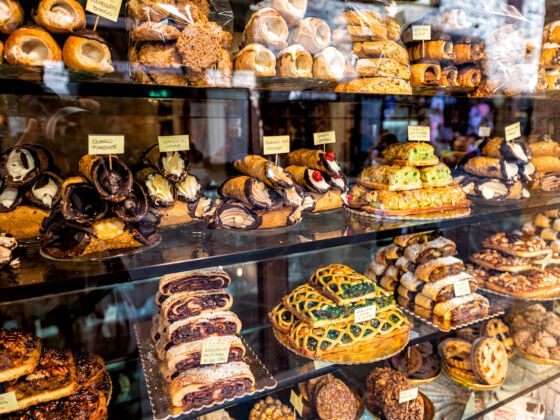

The Most Iconic Dessert From Each of Italy’s 20 Regions
From Abruzzo to Veneto, each region in Italy uses local flair to make desserts that reflect the environment and history. The hot temperatures of Southern Italy pair effortlessly with frozen delicacies while the more mountainous regions of the north favor richer, more decadent flavors that are influenced by many of Italy’s neighboring nations. Some sweets are so provincial that they’re protected by law to ensure the authentic dish is only produced in the region where it originated.
What remains consistent about Italian desserts is that no matter which region you’re in, dessert is always an essential element of a sit-down meal. Italians are known to enjoy a leisurely meal that ends with coffee and dessert, or a relaxing afternoon espresso break balanced with something sweet. So do as the Italians do and sample a few (or all!) of these indulgent delights on your next trip around Italy.
1. Abruzzo: pizzelle

Photo: leungchopan/Shutterstock
Although its name might sound similar to pizza, the pizzelle cookie resembles a waffle more than a pizza pie. Most of these light, delicate cookies have intricate designs from the often-antique waffle irons they’re made with. Dating back to the 8th century, Abruzzo’s pizzelle is considered Italy’s oldest known cookie. These wafer-like treats are customarily simple, made of just eggs, flour, sugar, and butter, but you can sometimes find more elaborate versions flavored with chocolate or nuts.
2. Basilicata: mostaccioli
Mostaccioli is the most popular dessert in this small, mountainous region in Southern Italy. The almond cookie is baked with the region’s speciality, vincotto (cooked wine), which gives it the signature dark brown color. Sweetened with honey and sometimes dipped in chocolate, the diamond-shaped biscuits are Basilicata’s favorite treat around Christmas in particular. You can also find this cookie all over southern Italy, including in Naples.
3. Calabria: tartufo di Pizzo

Photo: Milan Sommer/Shutterstock
Occupying the toe of Italy, Calabria’s sun-drenched coastline is unsurprisingly the home of one of Italy’s best frozen desserts. Known as the city of ice cream, the small fishing town of Pizzo is filled with gelaterias, but nowadays the tartufo is just as well known. The story goes that after a local ice cream maker ran out of molds, he started forming the frozen treat into small balls and dipped them into melted chocolate, thereby accidentally creating tartufo. Italy even recognized the Tartufo di Pizzo with IGP status, meaning the product must be produced in the region of Calabria to be called Tartufo di Pizzo. Today, the center of the tartufo is sometimes filled with raspberry, strawberry, or cherry syrup, and they’re often enjoyed at outdoor cafes accompanied by an espresso.
4. Emilia-Romagna: torta barozzi
This rich almond and cocoa cake might be Italy’s best-kept secret – literally. In 1886, a pastry chef named Eugenio Gollini came up with a recipe for this light chocolate cake, and the bakery bearing his name has kept it a protected secret ever since. Today, Pasticceria Gollini, a pastry shop in the town of Vignola just outside of Modena, still creates torta barozzi from the original recipe. The intense chocolate, coffee, and nutty flavors are sweet yet spicy. Try it with coffee for a genuinely Italian experience.
5. Campania: babà napoletano
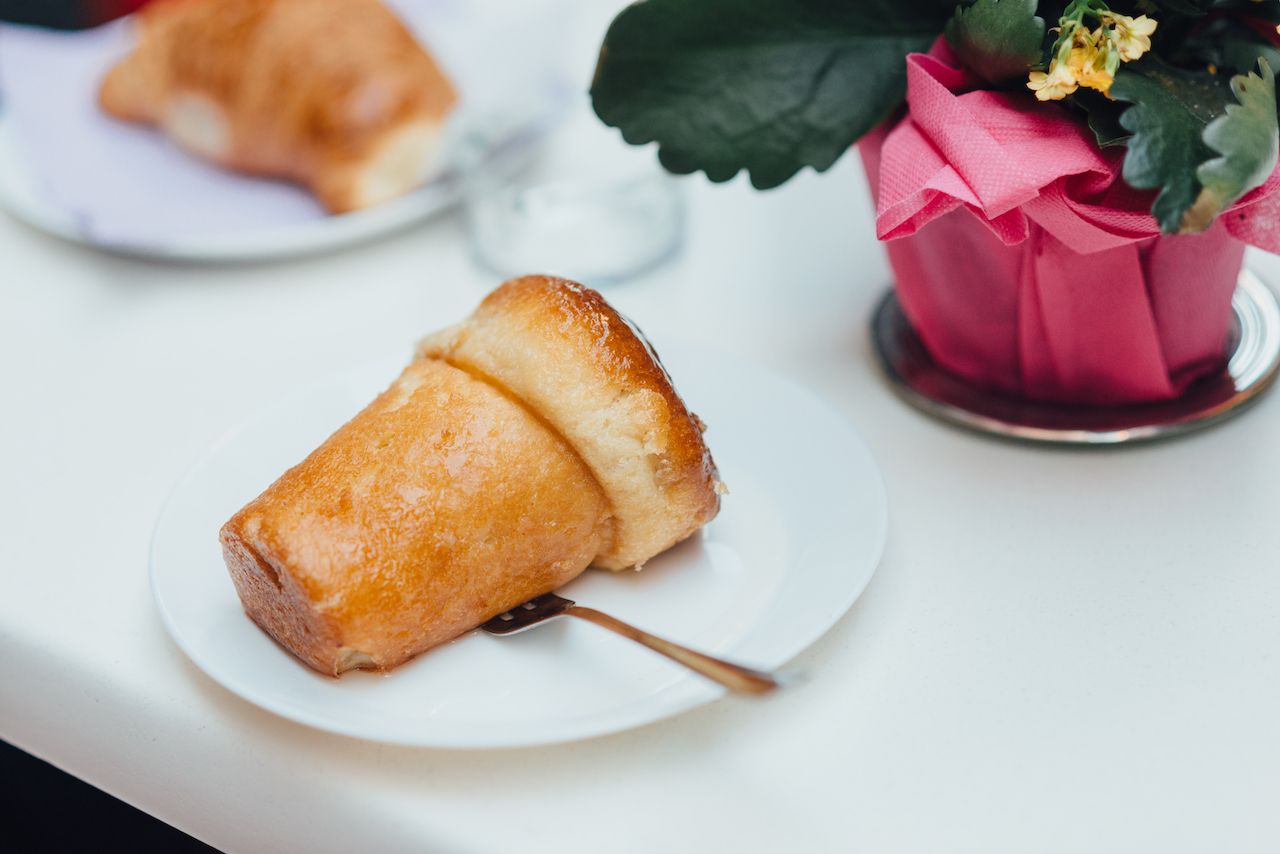
Photo: Denys Poliakov/Shutterstock
Campania might be best known as the region where pizza was created, but its culinary contributions don’t stop there. Babà napoletano is a must-try for visitors to this region, especially for those exploring Naples. The small, spongy, mushroom-shaped cake is bathed in a citrusy rum syrup that’s as sticky as it is delicious. Bakeries along the Amalfi coast infuse the region’s famous lemons into the cake, while other versions are served with a fresh whipped cream topping. The dessert might not be entirely Italian, however: Some stories say it first appeared in France before chefs brought it to Italy in the 19th century.
6. Lazio: brutti ma buoni
The name of this cookie is a tongue-in-cheek play on it’s appearance: Burutti ma buoni translates to “ugly but good.” They might not look like much on the outside, but one bite will have you hooked. Traditionally made with hazelnuts or almonds, the soft, chewy center is a surprise on the first bite, and the delicate texture is thanks to the cookie’s meringue base. While popular in Lazio, the origins of this cookie are contested: In addition to Lazio’s claim on its creation, Piedmont and Lombardy also lay claim to the dessert. One story asserts that in 1878, a pastry chef named Costantino Veniani created the cookie at his bakery in Gavirate, outside Milan.
7. Lombardy: sbrisolona
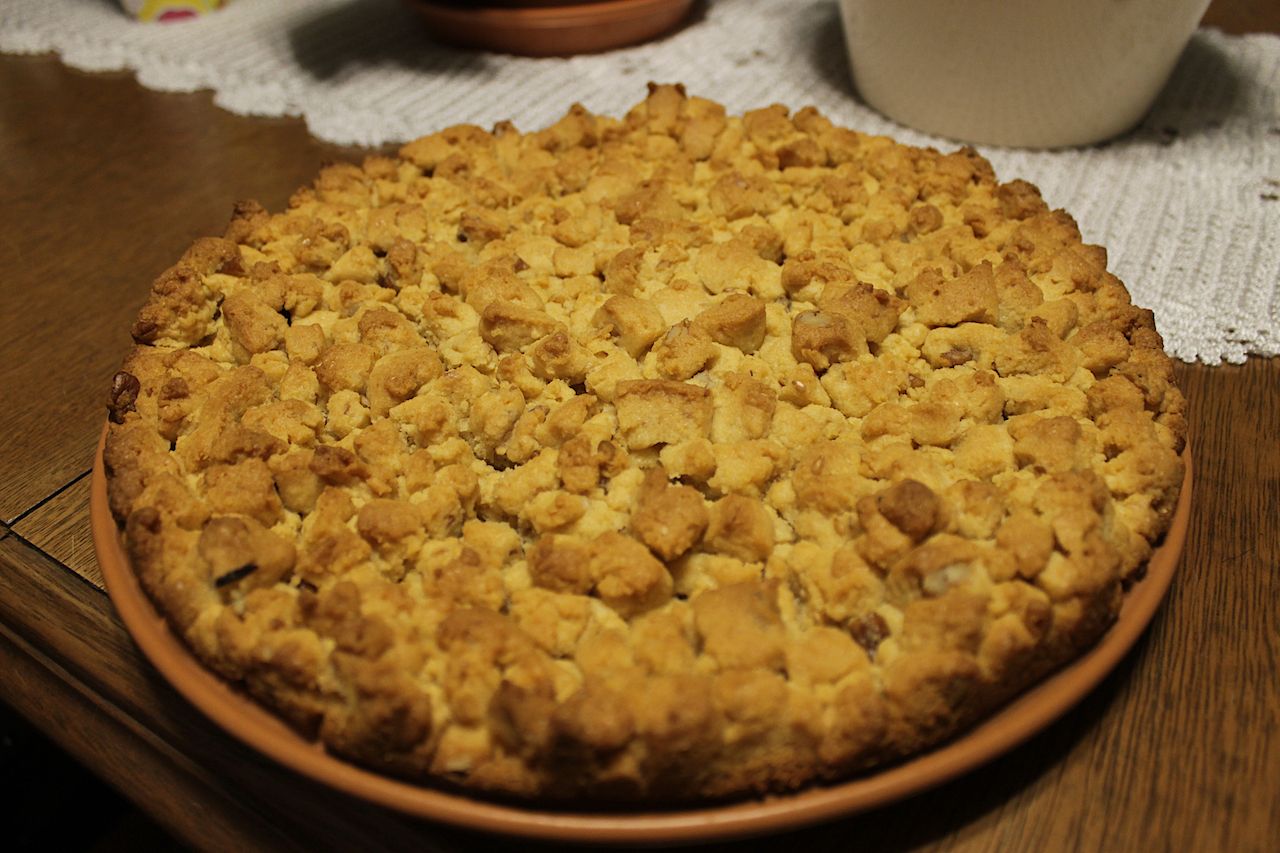
Photo: vic.vic/Shutterstock
Originating in the town of Mantua, sbrisolona comes from the Mantuan word meaning crumbly, and it’s easy to see why. The buttery almond tart is a cross between biscotti and shortbread, and sheds its fair share of crumbs with every bite. Don’t let that stop you though. This crunchy cookie, which is cut into slices like a pie, pairs perfectly with coffee for a sweet breakfast or an afternoon snack.
8. Friuli-Venezia Giulia: gnocchi di prugne
These gnocchi from Friuli-Venezia Giulia (or simply Friuli) might look savory, but are actually stuffed with sweet Italian prunes, toasted in butter, and dusted with cinnamon. The region borders Austria and Slovenia, and its local cuisine is heavily influenced by the former Austro-Hungarian Empire. Plum dumplings are common in many Eastern European countries, and gnocchi di prugne is the Italian take. The distinctive flavor profile allows this dish to be served both as a savory course and a dessert, so don’t be surprised if you see it listed on the menu next to familiar plates of pasta.
9. Piedmont: panna cotta

Photo: Smile Studio/Shutterstock
Located in the North of Italy, Piedmont is known for great wine and stunning mountain views. It’s also the birthplace of panna cotta, one of the most universally beloved desserts to come out of Italy. Panna cotta, which translates literally to cooked cream, is a softly set pudding. It’s the essence of simplicity, and is one of Italy’s most versatile desserts. The pudding is often infused with ingredients like chocolate, coffee, caramel, or fruit flavors from mango to raspberry to lemon.
The traditional Piedmont style panna cotta was originally prepared by cooking the cream and sugar with fish bones, but today most people prefer to use gelatin or agar agar as a setting agent. In Piedmont, you might see panna cotta served with biscotti and topped with fresh berries.
10. Liguria: baci di riviera
The region of Liguria is also known as the Italian Riviera, and these baci di riviera (or riviera kisses) are named after the famous waterfront. Also known as baci di Alassio, the bite-size cookies originate in the charming Ligurian town of Alassio. Made of two decadent chocolate hazelnut cookies held together by chocolate ganache, they are named for their resemblance to two lips kissing. Unlike their sister cookie, baci di dama, (a similar sandwich cookie originating in Northern Italy) baci di Alassio is soft and chewy instead of crunchy.
11. Puglia: torta di limone e olio
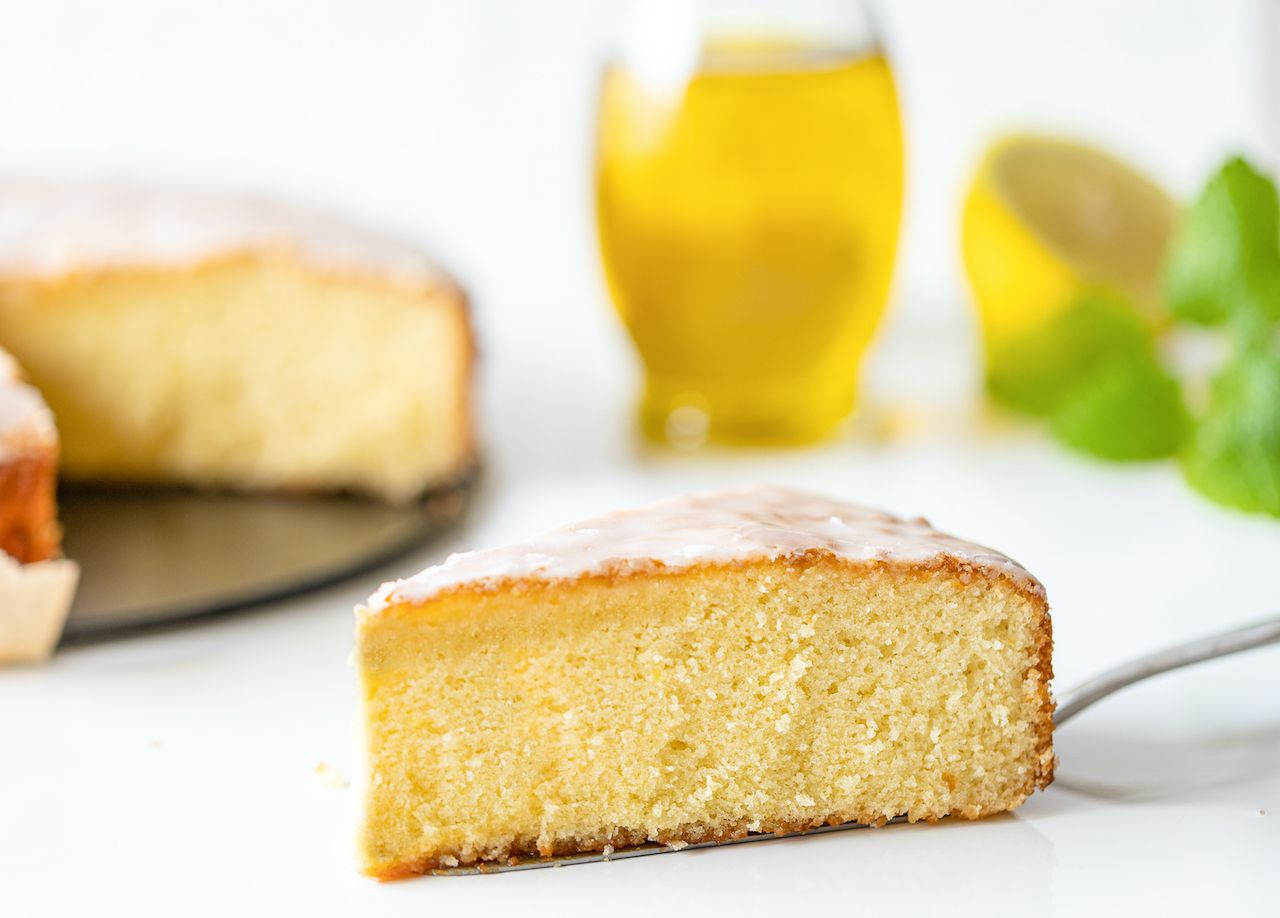
Photo: kathringabriel/Shutterstock
This strip of pristine Mediterranean coastline in the south of Italy supplies about 40 percent of the country’s olive oil. It’s only fitting that Puglia’s “liquid gold,” as it’s become known, takes center stage in the region’s best desserts. Lemon olive oil cake emphasizes Puglia’s local ingredients — olive oil and lemons — in a simple, airy cake. Torta di limone is the perfect light, fluffy, and tangy treat to eat while enjoying Puglia’s sunshine-soaked beaches.
12. Marche: ricotta calcioni
These small pockets of deep-fried dough might look like ravioli, but this is no pasta dish. Much of Marche’s cuisine revolves around fried food: fritto misto, fried stuffed olives, and fried seasonal vegetables are among the region’s most famous dishes. So it’s only natural one of the region’s favorite desserts follows the trend. Square pouches of pastry dough are filled with sweet ricotta and lemon peel and tossed in honey and lemon zest. The calcioni are fried and served warm, allowing the filling to ooze out and melt in your mouth when you take a bite.
13. Sardinia: seadas
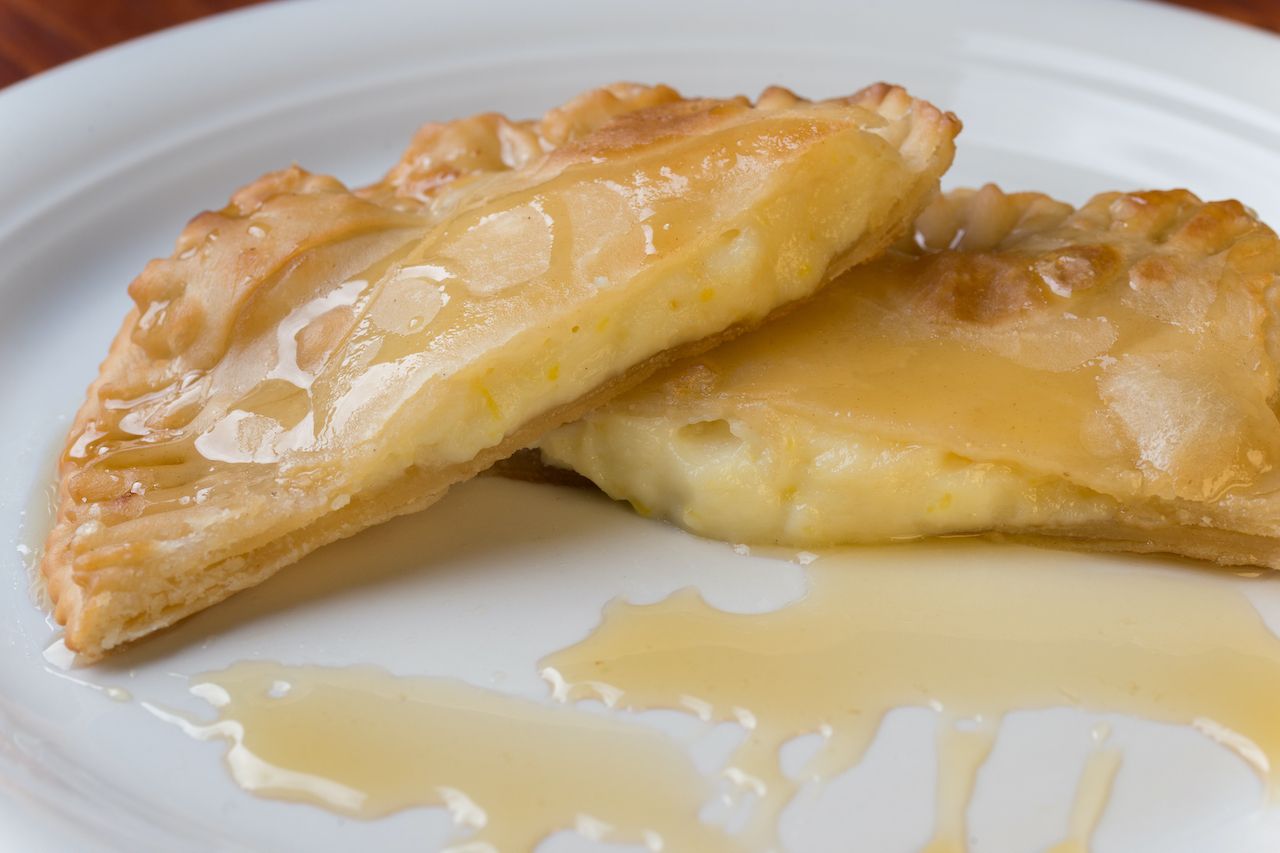
Photo: Emiliano Pane/Shutterstock
This sweet and savory pastry is one of Sardinia’s most famous dishes. Crisp, deep-fried pockets of local pecorino cheese are covered in local honey, striking the perfect balance of salty and sweet. The dish highlights the island’s agricultural traditions of using fresh sheep’s milk cheese and the region’s prized Corbezzolo honey. The dessert was traditionally only served for holidays like Easter and Christmas, but it’s become so popular that it is now available year-round in the region.
14. Molise: scorpelle
Every February, the streets of Molise come alive with Carnevale celebrations. Carnevale is considered one of Italy’s Historic Carnivals, and the region radiates with enthusiasm as locals eat, drink, and dance before the restrictions of Lent end the fun on Ash Wednesday. Scorpelle, or small pieces of fried dough, are the preferred dessert of the festival. The pastry resembles a sugar-dusted doughnut and sometimes includes other local ingredients like honey and lemons.
15. Sicily: cannoli
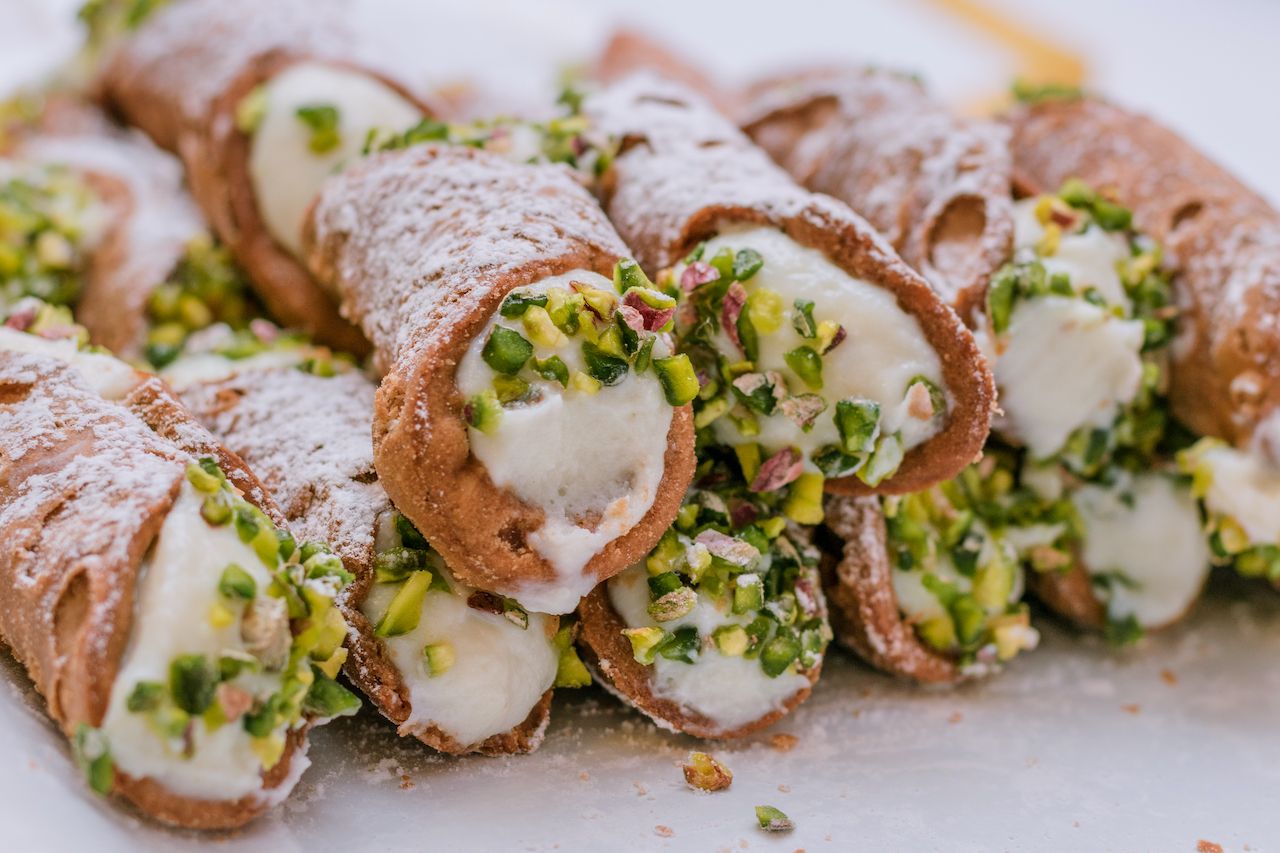
Photo: vincenzo scarantino/Shutterstock
Translating to “little tube” in Sicilian, this dessert is probably what immediately jumps to mind when you imagine a quintessential Italian dessert. The tube-shaped pastry dough is fried, filled with sweet and creamy ricotta, and dressed in a variety of toppings, including fruit, nuts, or chocolate.
There are several legends surrounding the origins of the now iconic cannoli: One story says nuns invented the pastry calle scoria, which they filled with ricotta, sugar, chocolate, and almonds, in preparation for Carnevale celebrations. Another origin story claims that the pastry’s creation can actually be credited to the Saracens, a group of Turkish and Arab Musilms, who brought sugar to the region now known as Italy.
16. Tuscany: torta della nonna
“Grandmother’s cake,” or torta della nonna, is a Tuscan staple, although everyone’s nonna makes it slightly differently. This simple pie-like dessert is made by putting a silky custard filling atop a pastry crust. The filling is often flavored with lemon, vanilla, or ricotta and topped with crunchy pine nuts, another Tuscan specialty. Despite its name, the cake is available in restaurants and bakeries — not just the homes of beloved Italian grandmothers. In fact, legends claim that the dish wasn’t the invention of a home cook, but rather a chef named Guido Samorini, at his restaurant in San Lorenzo.
17. Trentino-Alto Adige: apple strudel
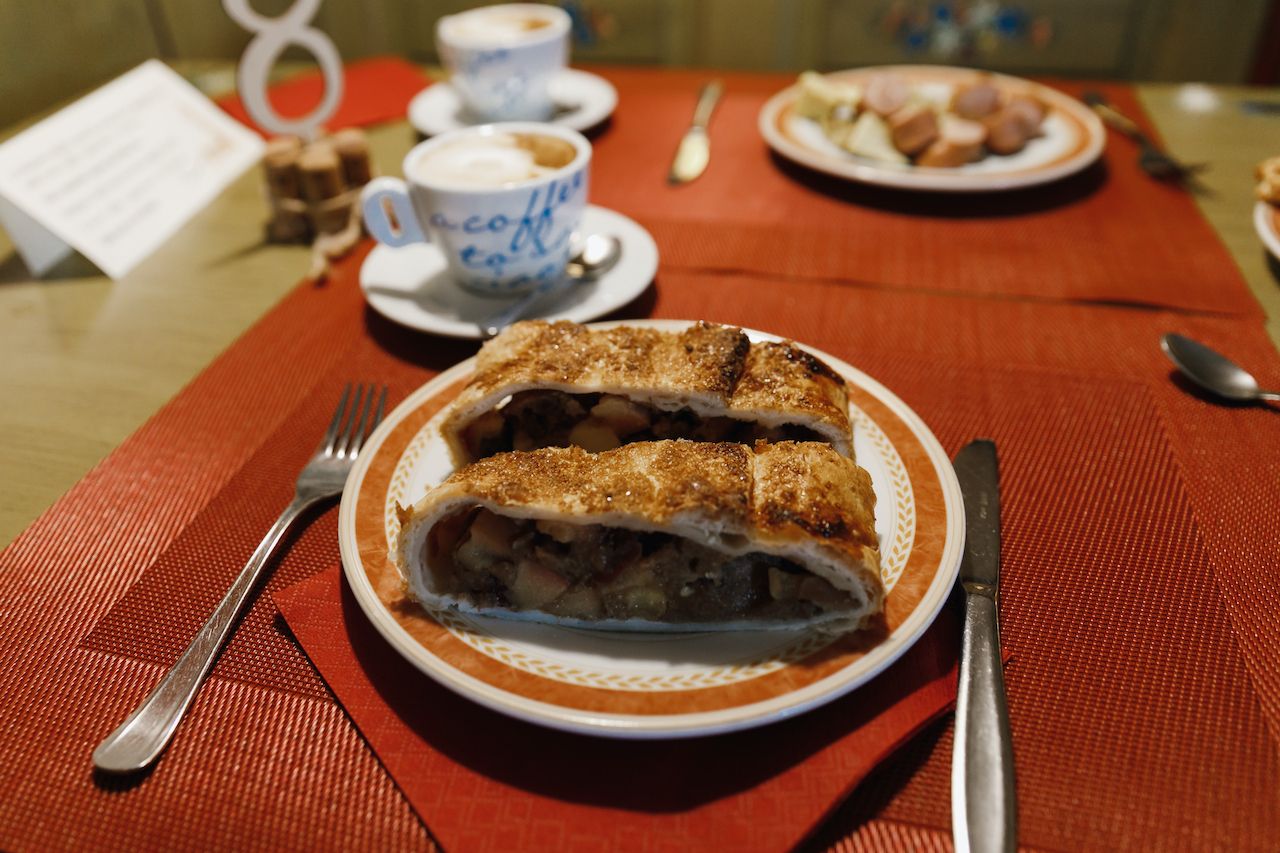
Photo: Konstantin Koreshkov/Shutterstock
Strudel might not come to mind when you think of Italian cuisine, but in this northern Italian region bordering Switzerland and Austria, apple strudel is an essential dish. The Italian version of this dessert is similar to what you’d find in Austria with paper-thin, flaky dough wrapped around golden delicious apples grown in one of Trentino-Alto Adige’s many orchards. Some variations include nuts or ricotta for an Italian take on this Germanic dessert.
18. Valle d’Aosta: montebianco
Bordered by France and Switzerland, this region’s most famous dessert takes its name from the its most famous mountain. The montebianco consists of sweetened chestnut puree topped with whipped cream that’s then molded into the shape of its namesake Mont Blanc. The picturesque mountain of a dessert has a creamy texture and is often dusted with powdered sugar “snow.” The dish is usually served in the fall when chestnuts are harvested.
19. Umbria: rocciata di Assisi

Photo: Buffy1982/Shutterstock
Umbrians are spoiled for choice when it comes to desserts. This sweets-loving region is home to a number of baked goods that highlight the region’s nuts, candied fruits, and chocolate. The rocciata di Assisi, loosely translating to “the round dessert,” is a classic Umbrian pastry filled with a variety of fruit found in the region – often apples, figs, and prunes – mixed with sugar, cinnamon, and jam. Bearing resemblance to a strudel, the rocciata di Assisi dates back the middle ages and is still a favorite today.
20. Veneto: tiramisu
Legend has it that the first dessert similar to tiramisu appeared in the 17th century as a dessert for Grand Duke Cosimo de’ Medici III, but the modern version of tiramisu as we know it today is probably much more recent. A 2007 Washington Post story dug into the history and found that it might have been created at a restaurant in Treviso in the early 1970s. In another history of the dessert, Italian food writer Anna Maria Volpi claims that the first official recipe for tiramisu appears in a 1983 cookbook called The Desserts of Veneto. Regardless of when it was originally invented, Eater contends that by the-1980s, the dessert had become one of the most popular on the planet, invading restaurant menus in America, too.
Made of layered ladyfingers and mascarpone cream, the name literally translates to “pick me up,” a reference to the fact that the ladyfingers are often drenched in a shot of espresso.